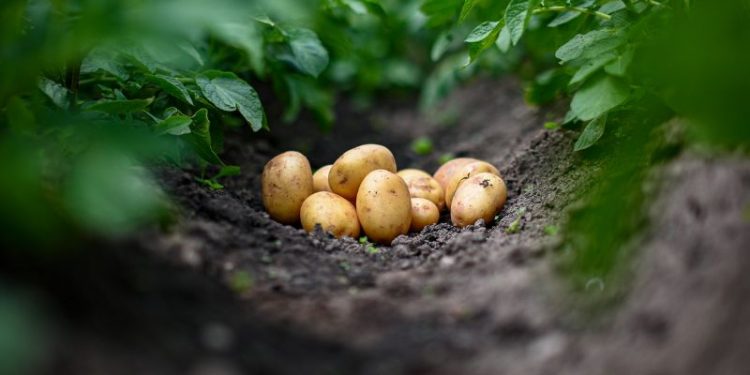High Demand for Early Potatoes Drives Exceptional Prices, While Seed Viability Issues Pose Challenges for Future Plantings\
As reported by Potatobusiness, the European potato market is experiencing a notable surge in early potato crop prices due to a significant imbalance between high demand and limited supply. This trend reflects broader issues within the industry, including problems with seed health and viability that could impact future yields.
Current Market Conditions for Early Potatoes
The early potato crop prices in Europe are currently at exceptionally high levels as the market grapples with a mismatch between supply and demand. This surge in prices is driven by strong consumer demand for fresh, early-harvested potatoes and constrained availability of produce. In particular, France has seen a dramatic increase in the export of ware potatoes to the U.K., with shipments reaching 12,019 tonnes by the end of April 2024, compared to just 911 tonnes during the same period last year. This rise in exports underscores the heightened demand for early-season potatoes across European markets.
Seed Health Issues Affecting Potato Plantings
Agronomists and industry experts have reported that seed health and viability are critical factors contributing to the current supply constraints. Problems with seed quality have led to emerging issues in subsequent plantings, with forecasts suggesting that these problems may intensify as the season progresses. The high demand for potatoes, coupled with these seed-related challenges, means that the industry faces a potential decline in crop yields and quality in the near future.
In Ireland, the demand for new season potatoes remains exceptionally strong, with very few fresh crops available at present. The high prices for available potatoes reflect the strong market demand, while the scarcity of new produce highlights the ongoing supply issues. According to the latest report from the Irish Farmers’ Association (IFA), growers are cautioned against clearing fields too early, as this practice may result in reduced yields and compromised harvest quality. The report also notes concerns about the potential negative impacts of using home-saved seed on both yield and quality.
Implications for Growers and Future Prospects
The current situation presents both opportunities and challenges for potato growers across Europe. On one hand, the high prices for early potatoes offer financial benefits for those who are able to supply the market. On the other hand, the issues related to seed health and the potential for declining yields in future plantings present significant risks.
Growers and industry stakeholders are advised to take a strategic approach to managing their potato crops in light of these challenges. Ensuring high seed quality, optimizing field management practices, and preparing for potential supply shortages will be crucial for maintaining both current and future market positions.
Strategic Recommendations for Potato Growers
- Invest in Seed Quality: Prioritize the use of high-quality, certified seed varieties to avoid the issues currently affecting crop viability. Collaborate with seed suppliers to ensure access to the best available planting materials.
- Optimize Field Management: Implement best practices for field preparation and crop management to maximize yields and maintain quality. Avoid practices that could lead to early field clearance, which can negatively impact future yields.
- Monitor Market Trends: Stay informed about market conditions and price trends to make strategic decisions about planting schedules and harvest times.
- Explore New Markets: Consider diversifying export opportunities and exploring new markets to capitalize on high demand for early potatoes.
Resources for Potato Growers
For additional information and resources related to potato seed health, crop management, and market trends, growers can refer to industry publications, agricultural extension services, and specialized potato growing forums.

